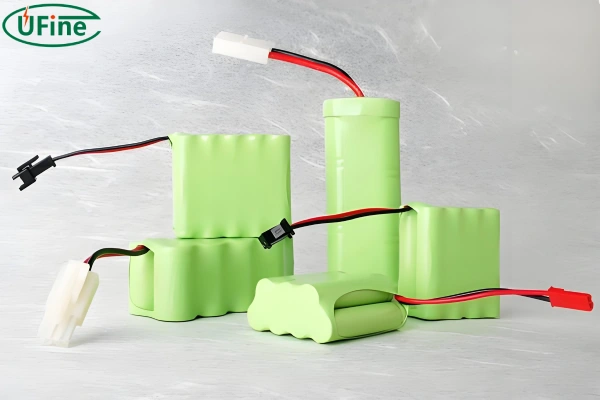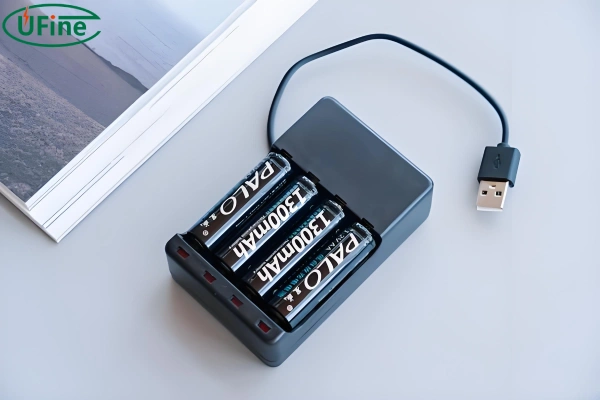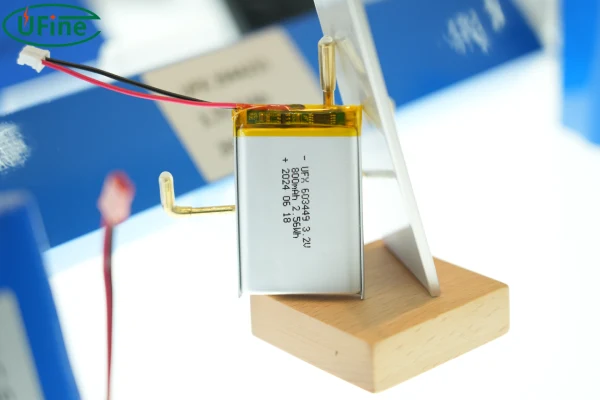Rechargeable batteries have become a staple in our everyday lives. From powering our gadgets to keeping our household items running, they’re everywhere. But have you ever wondered how long does a recharged battery last? Well, this guide is here to answer that question and much more. Let’s dive in!
Part 1. Rechargeable battery types

To understand how long a recharged battery lasts, we first need to look at the different types of rechargeable batteries available. Each type has its unique characteristics and uses.
- Nickel-Cadmium (NiCd): These are some of the oldest types of rechargeable batteries. They are known for their durability and can handle a high number of charge cycles. However, they suffer from what’s known as the “memory effect,” which means their capacity can be reduced if they are not fully discharged regularly. They are often used in power tools and medical devices.
- Nickel-Metal Hydride (NiMH): NiMH batteries are a step up from NiCd. They have a higher capacity and are less prone to memory effects. This makes them a popular choice for gadgets like cameras, remote controls, and some cordless phones.
- Lithium-Ion (Li-ion): Li-ion batteries are the reigning champions in the world of rechargeable batteries. They boast a high energy density, which means they can store more energy in a smaller size. This makes them perfect for smartphones, laptops, and electric vehicles. They are also less affected by the memory effect.
- Lithium Polymer (Li-Po): Li-Po batteries are a variant of Li-ion. They are thinner and lighter, making them ideal for devices like drones, some smartphones, and other portable electronics.
- Lead-Acid: These are commonly used in vehicles and backup power systems due to their ability to deliver high power. They are heavy but reliable and can handle deep discharges better than many other types.
- Rechargeable Alkaline: These are less common but can be recharged a few times. While they are not as efficient or long-lasting as other rechargeable types, they are a more environmentally friendly option compared to disposable alkaline batteries.
Part 2. Which rechargeable battery is the best?
Choosing the best rechargeable battery depends on several factors. Let’s compare the different types based on seven key criteria:
- Capacity: Generally, Li-ion batteries have the highest capacity, allowing them to power devices for longer periods. NiMH batteries follow, offering a good balance between capacity and cost. NiCd and lead-acid batteries tend to have lower capacities.
- Lifespan: In terms of charge cycles, Li-ion batteries usually come out on top, lasting between 300-500 cycles. NiCd and NiMH batteries typically last between 300-500 cycles, with NiCd on the lower end. Lead-acid batteries can last for 200-300 cycles.
- Memory Effect: This is a big downside for NiCd batteries, which can lose capacity if not discharged properly. NiMH batteries are less affected, and Li-ion batteries do not suffer from this issue at all.
- Cost: NiCd and NiMH batteries are generally more affordable. Li-ion batteries can be more expensive, but their performance and longevity often justify the higher price. Lead-acid batteries vary in cost but can be quite economical for their power output.
- Weight: Li-ion and Li-Po batteries are lightweight, which is why they are favored in portable electronics. Lead-acid batteries, on the other hand, are much heavier and are typically used in stationary or vehicle applications.
- Environmental Impact: NiCd batteries contain toxic cadmium, posing environmental and health risks. Li-ion and NiMH batteries are more environmentally friendly and recyclable.
- Usage: Li-ion batteries are ideal for high-drain devices like smartphones and laptops. NiMH batteries work well for moderate-drain devices like cameras and remote controls. Lead-acid batteries are best for applications requiring high power output, such as cars and backup power systems.
Part 3. How often do you need to recharge a battery?
The frequency with which you need to recharge a battery depends on its type and how you use it. Here’s a quick overview:
- NiCd: These batteries usually need recharging after 500-1000 cycles. However, they should be fully discharged periodically to avoid the memory effect.
- NiMH: Typically, these batteries need recharging after 300-500 cycles. They are less prone to the memory effect, so you don’t need to discharge them completely.
- Li-ion: These batteries can last 300-500 cycles before needing a recharge. They prefer partial discharges and should not be fully drained regularly.
- Lead-Acid: These batteries often need recharging after 200-300 cycles. They can handle deep discharges better than other types.
Your usage patterns play a significant role. High-drain devices will require more frequent recharging compared to low-drain devices.
Part 4. How long does a recharged battery last?
The lifespan of a recharged battery can vary widely. Here’s a detailed look:
- NiCd: Typically, these batteries can last 1-2 years with proper care.
- NiMH: These usually last around 2-3 years, depending on usage and maintenance.
- Li-ion: With good care, Li-ion batteries can last 2-5 years, making them a durable choice for many devices.
- Lead-Acid: These batteries often have a lifespan of 3-5 years, especially when used in vehicles or backup power systems.
The actual lifespan depends on how well you maintain the battery and the conditions in which it is used. Factors like temperature, charging habits, and storage conditions can all impact battery life.
Part 5. What affects the life of rechargeable batteries?
Several factors can affect the longevity of rechargeable batteries:
- Temperature: Extreme temperatures, both hot and cold, can shorten battery life. High temperatures can cause the battery to degrade faster while freezing temperatures can cause physical damage.
- Usage Patterns: Frequent deep discharges can reduce a battery’s lifespan. It’s often better to recharge them before they are completely drained.
- Charging Habits: Overcharging or undercharging can harm the battery. Using the correct charger and avoiding overcharging can help maintain battery health.
- Storage Conditions: Storing fully charged or discharged batteries can reduce lifespan. It’s best to store them at around 50% charge in a cool, dry place.
Part 6. Signs of reduced battery life
Recognizing the signs of reduced battery life can help you take action before the battery fails. Here are some common signs:
- Reduced Capacity: If the battery doesn’t last as long as it used to, it’s a sign that its capacity is decreasing.
- Longer Charging Time: The battery may be degrading if it takes longer to charge fully.
- Overheating: Unusual heat during charging or use can indicate a problem.
- Swelling: Physical swelling or deformation is a clear sign of a failing battery and should be addressed immediately.
Part 7. How to extend the life of rechargeable batteries?
Here are some practical tips to help you extend the life of your rechargeable batteries:
- Proper Charging: Use the correct charger to avoid overcharging. Smart chargers can help by adjusting the charging rate and preventing overcharging.
- Optimal Storage: Store batteries in a cool, dry place. Avoid storing them fully charged or fully discharged.
- Regular Use: Use the batteries regularly to keep them active. Batteries that sit unused for long periods can lose capacity.
- Avoid Extreme Temperatures: Keep batteries away from heat and cold. Use battery insulators if necessary.
- Partial Discharges: For Li-ion batteries, avoid full discharges. Instead, try to keep the charge level between 20% and 80%.
Part 8. Are rechargeable batteries worth It?
In a word, yes! Rechargeable batteries offer significant cost savings over time compared to disposable batteries. They are also better for the environment, as they reduce waste. With proper care and maintenance, they can provide reliable power for years. So, investing in rechargeable batteries is definitely worth it.
In conclusion, understanding how long a recharged battery lasts and how to maintain it can save you time and money. By choosing the right type of battery and following best practices, you can maximize its lifespan. So, are rechargeable batteries worth it? Absolutely! With the right approach, they can power your devices efficiently and sustainably for years to come.
Related Tags:
More Articles

Standard 24 Group Battery Dimensions Explained
What is 24 Group battery standard dimension? Find out now and choose the right battery for your needs. Don’t wait—get informed!
How Cobalt Free Batteries Are Transforming the Electric Vehicle Market?
Cobalt-free batteries are transforming the electric vehicle market with a sustainable choice. This article explores their benefits, challenges, and potential.
Lithium Manganese Batteries: A Comprehensive Guide
Lithium manganese batteries are transforming energy storage. This guide covers their mechanisms, advantages, applications, and limitations.
12 Volt 100Ah Lithium Battery: 12 Important Facts
Want to know about 12 Volt 100Ah lithium batteries? Explore essential facts that reveal their advantages and uses. Get informed today!
Why Choose a UPS Lithium Battery for Your Power Backup Needs?
Choosing the right battery for UPS systems is vital. UPS lithium batteries offer superior performance and longevity, making them perfect for power backup needs.





